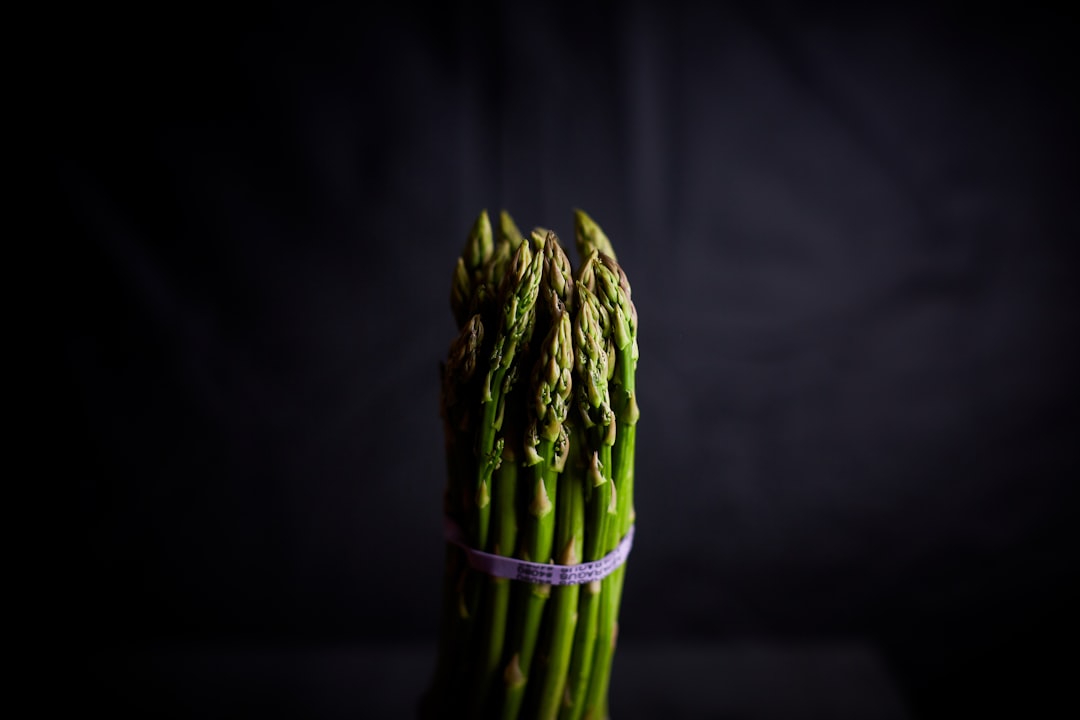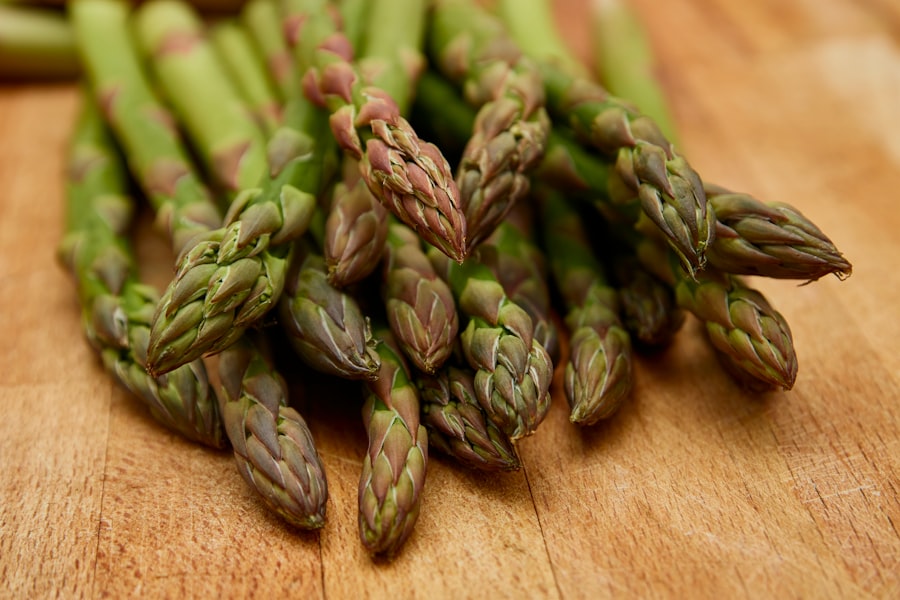Growing Asparagus from Seedlings: A Beginner’s Guide

Asparagus is a popular vegetable known for its unique flavor and nutritional benefits. It is a perennial plant that can be grown from seedlings, making it an excellent choice for home gardeners. Growing asparagus from seedlings allows you to have greater control over the growing process and can be a cost-effective alternative to buying mature plants. In this article, we will explore the benefits of growing asparagus from seedlings, as well as provide tips and techniques for successful cultivation.
Key Takeaways
- Growing asparagus from seedlings is a rewarding and cost-effective way to enjoy this delicious vegetable.
- Benefits of growing asparagus from seedlings include a longer harvest season and the ability to choose from a wider variety of asparagus plants.
- Preparing the soil for asparagus seedlings involves adding compost and ensuring proper drainage.
- When choosing and planting asparagus seedlings, it’s important to space them properly and plant them at the right depth.
- Watering and fertilizing asparagus seedlings regularly is crucial for optimal growth and yield.
Benefits of Growing Asparagus from Seedlings
One of the main benefits of growing asparagus from seedlings is the cost-effectiveness compared to buying mature plants. Asparagus plants can take several years to reach maturity and produce a significant harvest. By starting with seedlings, you can save money and time in the long run. Additionally, growing asparagus from seedlings allows you to have greater control over the growing process. You can choose the specific variety of asparagus that you prefer and ensure that it is grown in optimal conditions.
Another advantage of growing asparagus from seedlings is the higher yield potential. Asparagus plants grown from seedlings tend to be healthier and more vigorous compared to those grown from crowns or roots. This can result in a larger harvest and more productive plants. By starting with seedlings, you can give your asparagus plants a head start and increase your chances of success.
Preparing the Soil for Asparagus Seedlings
Before planting your asparagus seedlings, it is important to prepare the soil properly. Asparagus prefers well-drained soil with a pH level between 6.0 and 7.0. Start by testing your soil to determine its pH level and nutrient content. You can purchase a soil testing kit or send a sample to a local agricultural extension office for analysis.
Once you have determined the pH level of your soil, you may need to amend it to create the ideal conditions for asparagus growth. If the pH is too low, you can add lime to raise it. If the pH is too high, you can add sulfur or peat moss to lower it. It is important to follow the recommendations from your soil test results to ensure that you are providing the correct amendments.
In addition to adjusting the pH, you should also incorporate organic matter into the soil. This can improve its structure and fertility, providing a better environment for your asparagus seedlings. You can add compost, well-rotted manure, or other organic materials to enrich the soil.
Choosing and Planting Asparagus Seedlings
| Choosing and Planting Asparagus Seedlings | |
|---|---|
| Best time to plant | Early spring or late fall |
| Soil requirements | Well-drained, fertile soil with a pH of 6.5-7.5 |
| Spacing | 18-24 inches between plants, 5-6 feet between rows |
| Depth to plant | 6-8 inches deep |
| Watering | Regular watering, especially during dry spells |
| Fertilizing | Apply a balanced fertilizer in early spring and again after harvest |
| Harvesting | Wait until the second year after planting to harvest spears, then harvest for 6-8 weeks in the spring |
When selecting asparagus seedlings, look for healthy plants with strong roots and no signs of disease or damage. Avoid seedlings that are wilted or have yellowing leaves. It is also important to choose a variety of asparagus that is suitable for your climate and growing conditions.
The best time to plant asparagus seedlings is in early spring, after the danger of frost has passed. Asparagus is a cool-season crop and prefers temperatures between 50°F and 75°F (10°C and 24°C). Choose a sunny location with well-drained soil for planting.
Before planting your seedlings, prepare the soil by removing any weeds or debris. Dig a trench that is approximately 6-8 inches deep and wide enough to accommodate the roots of your seedlings. Space the seedlings about 12-18 inches apart in the trench, with the crowns facing up. Cover the roots with soil, leaving about 2 inches of the crown exposed.
Watering and Fertilizing Asparagus Seedlings
Asparagus seedlings require regular watering to establish their roots and promote healthy growth. Water deeply once or twice a week, providing enough moisture to saturate the soil to a depth of at least 6 inches. Be careful not to overwater, as this can lead to root rot and other diseases.
In addition to regular watering, it is important to fertilize your asparagus seedlings to provide them with the nutrients they need. Asparagus is a heavy feeder and requires a steady supply of nutrients throughout the growing season. Apply a balanced fertilizer, such as a 10-10-10 or 14-14-14 formula, according to the package instructions. It is best to apply fertilizer in early spring before the spears emerge and again in mid-summer.
Mulching Asparagus Seedlings for Optimal Growth

Mulching is an important practice for growing asparagus seedlings. Mulch helps to conserve moisture, suppress weeds, and regulate soil temperature. It also adds organic matter to the soil as it breaks down, improving its fertility.
When mulching asparagus seedlings, choose a material that will not compact or smother the plants. Good options include straw, wood chips, or shredded leaves. Apply a layer of mulch about 2-3 inches thick around the base of the plants, taking care not to cover the crowns.
Managing Pests and Diseases in Asparagus Seedlings
Asparagus can be susceptible to a variety of pests and diseases, but with proper care and management, you can minimize their impact on your plants. Common pests that affect asparagus include aphids, asparagus beetles, and slugs. These pests can be controlled through regular monitoring and the use of organic or chemical insecticides.
Diseases that can affect asparagus include fusarium wilt, crown rot, and rust. To prevent these diseases, it is important to practice good sanitation in your garden. Remove any infected plants or plant debris promptly and avoid planting asparagus in the same location year after year.
Harvesting Asparagus Seedlings: When and How
Asparagus seedlings typically take 2-3 years to reach maturity and produce a significant harvest. The first year, it is best to allow the plants to grow without harvesting any spears. This allows the plants to establish a strong root system and ensures a more productive harvest in the future.
In the second year, you can begin harvesting a few spears, but only for a short period of time. Harvesting too many spears can weaken the plants and reduce their productivity. To harvest asparagus, simply snap or cut the spears at ground level when they are 6-8 inches tall. Be careful not to damage the emerging spears or the crown of the plant.
Storing and Preserving Asparagus Seedlings
To store asparagus, place the freshly harvested spears in a plastic bag and refrigerate them. They can be stored for up to a week, but it is best to consume them as soon as possible for optimal flavor and quality.
If you have a surplus of asparagus, you can also preserve it by freezing or canning. To freeze asparagus, blanch the spears in boiling water for 2-3 minutes, then plunge them into ice water to stop the cooking process. Drain and pat dry before placing them in freezer bags or containers. Frozen asparagus can be stored for up to 12 months.
To can asparagus, pack the blanched spears into sterilized jars and cover them with boiling water or a brine solution. Process the jars in a pressure canner according to the recommended times and pressures for your altitude.
Tips for Success in Growing Asparagus from Seedlings
– Choose a variety of asparagus that is suitable for your climate and growing conditions.
– Prepare the soil properly by testing and amending it as needed.
– Select healthy seedlings with strong roots and no signs of disease or damage.
– Plant the seedlings in early spring, after the danger of frost has passed.
– Water and fertilize regularly to promote healthy growth.
– Mulch around the base of the plants to conserve moisture and suppress weeds.
– Monitor for pests and diseases and take appropriate action to control them.
– Harvest asparagus spears when they are 6-8 inches tall, being careful not to damage the plants.
– Store or preserve excess asparagus to enjoy throughout the year.
Growing asparagus from seedlings can be a rewarding and cost-effective way to enjoy this delicious vegetable. By following the steps outlined in this article, you can successfully cultivate asparagus in your own garden. From preparing the soil to harvesting and preserving the spears, each step is important for ensuring healthy and productive plants. So why not give it a try? With a little patience and care, you can enjoy fresh, homegrown asparagus for years to come.
If you’re looking to learn how to grow asparagus from seedlings, you’ll find a wealth of information on Lawn World’s website. They have a comprehensive guide that covers everything you need to know about growing asparagus from seedlings, including the best practices for planting, caring for, and harvesting this delicious vegetable. To get started, check out their article on “Growing Asparagus from Seedlings” which provides step-by-step instructions and helpful tips. You can find this article and more on their website’s sitemap.
FAQs
What is asparagus?
Asparagus is a perennial vegetable that belongs to the lily family. It is known for its tender, succulent spears that are harvested in the spring.
Can asparagus be grown from seedlings?
Yes, asparagus can be grown from seedlings. However, it is a slower process than growing from crowns.
When should asparagus seedlings be planted?
Asparagus seedlings should be planted in the spring, after the last frost.
How deep should asparagus seedlings be planted?
Asparagus seedlings should be planted about 1 inch deep in well-draining soil.
How far apart should asparagus seedlings be planted?
Asparagus seedlings should be planted about 18 inches apart in rows that are spaced 3-4 feet apart.
How long does it take for asparagus to grow from seedlings?
It can take 2-3 years for asparagus to grow from seedlings before it is ready to be harvested.
How should asparagus seedlings be cared for?
Asparagus seedlings should be watered regularly and kept free of weeds. They should also be fertilized with a balanced fertilizer in the spring and fall.



